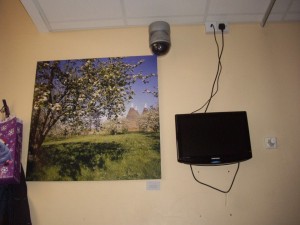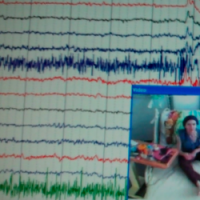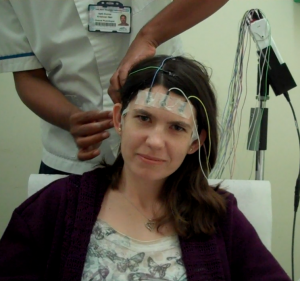An EEG (Electroencephalogram) is one of the most useful tests to diagnose Epilepsy as it measures the electrical activity of the brain in ‘real time’. However just because your not having seizure during the test it doesn’t mean its not useful, as often someone with Epilepsy will have low level unusual brain activity constantly. This unusual activity is called Epileptiform activity.
Sometimes the technicians try to provoke a seizure during the test by methods such as withdrawing medication, using strobe lighting or sleep deprivation.
So what is a EEG all about? The EEG consists of many electrodes (metal ended wires) which are glued onto your head.
Before performing the test the technician measures your head and then makes marks where the electrodes will be placed. Strong paste type glue is then used and the wires are glued really tight onto your head – this may hurt a little as the technician has to press and rub really hard to make the contact.
Once all the electrodes are in place the wires are connected to the machine and the test begins.
There are many versions of this test.
30minutes – 1 hours test:
Where you will sit or lay on a bed and be asked to open/close your eyes and take deep breathes, hold breath on and off and such like. The technician may then put a light in from of you. This light is strobe and it is made to flash at different speeds. This may or may not cause a seizure or may make you feel ill with weird sensations. The technician will stop the light if he sees epileptiform activity to prevent a seizure if he can. About 5% (1 in 20) people with Epilepsy are sensitive to flashing lights.
Sleep Deprivation Test:
For most people with Epilepsy there is a high chance of showing irregular electrical activity when they’re tired or going to sleep. A sleep deprivation EEG may help get more of a useful reading. This test is done the same way as the normal EEG test however you will sleep during the test. To help this you will be asked to stay awake all night before the test and may be given a light sedative to help you sleep during the test.
Video Telemetry:
A video telemetry happens in the hospital as an in-patient. It is done to try and locate the specific area of the brain that is causing the seizures. There are 2 forms of video telemetry. Skin or Deep brain. Deep brain telemetry is only done if surgery to cure the Epilepsy is a serious option.
A video telemetry will take place over a few days – a week. You will be in one room with a video camera pointed towards the bed.

There will be a monitor behind the bed with a long cable and you will have a few more electrodes on than on the standard EEG.
At the same time you will wear a portable EEG which allows you to move about a bit, however you will be asked to stay in the bed as much as possible. Being video’d along with the EEG allows the Dr’s to compare your movements with the electrical activity being monitored and define where in the brain the seizure activity starts.

Ambulatory Test:
These are postcode lottery options of testing on the NHS and not available everywhere. An ambulatory EEG is a portable machine you wear and can go about your normal daily activities and just visit the hospital once a evening to download the information. This test can be done for several days, or weeks. This allows for more chance to catch a seizure on EEG monitoring.

